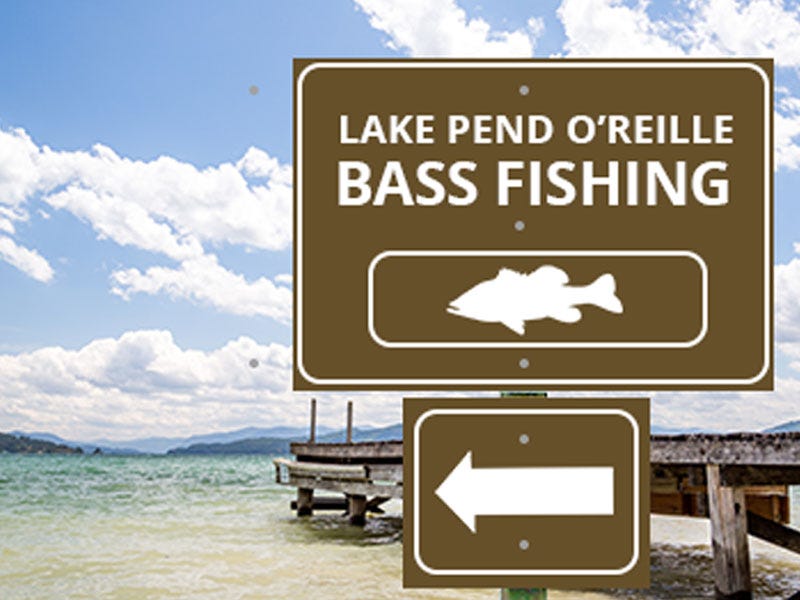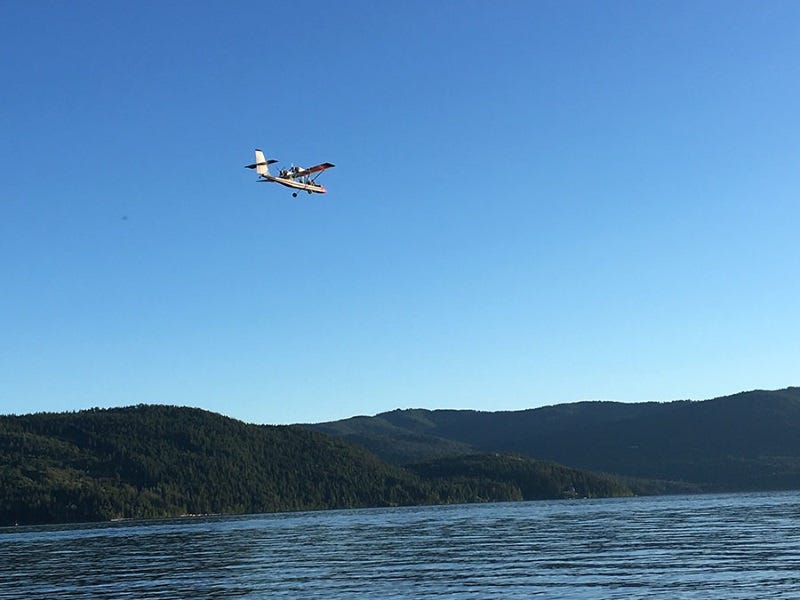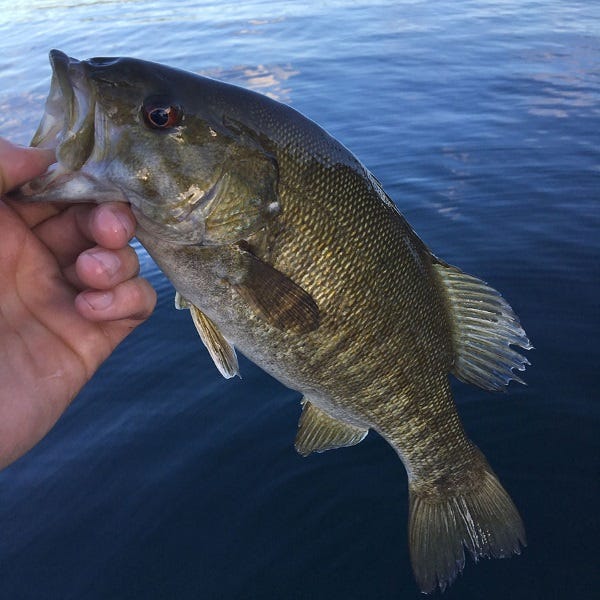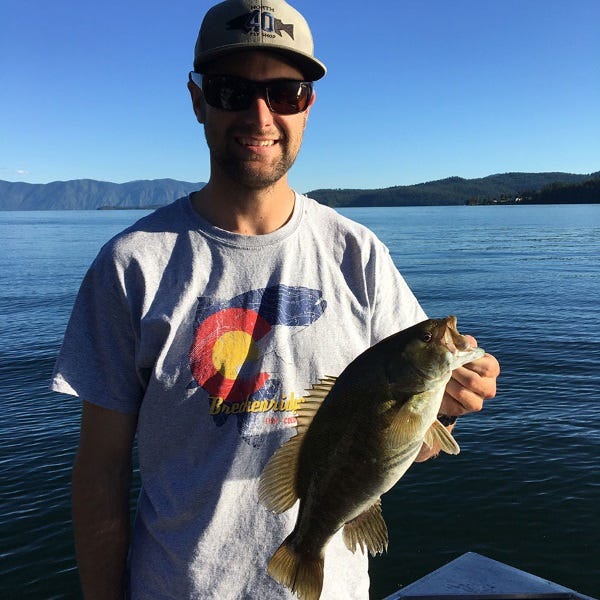How to Fly Fish for Smallmouth Bass in Lake Pend O'reille


Pictures of hog browns, brightly colored cutthroats, and healthy rainbows certainly get a guy excited to go fly fishing. But what if I told you that there is one particular species that is so often overlooked that you can consistently have epic days with aggressive takes and energetic fights? And what if I told you didn't have to travel hundreds of miles? Interested?
Of course you are.
I am here to tell you that you need look no further than fishing smallmouth in Lake Pend O’reille. Our fishery here on Lake Pend Oreille is greatly under fished when it comes to fly fishing for smallmouth. There are certainly some considerations to think about when fishing for smallmouth, but if you keep reading, you too will know how best to fly fish for smallmouth on Lake Pend O'reille.
Structure, Structure, Structure: Fish for Bass by Structures
Smallmouth love to live around places with structure. This is no surprise to anyone who has drowned a worm under a bobber off a dock. The important thing to realize is that the types of structure change with the seasons. This is just what I have noticed on Lake Pend Oreille, it may be different for other lakes that don't experience cold winters.
Spring Fishing for Bass
This is the time of year when I get Bass fever the worst. Smallmouth will work their way to shallow flats, and feed over sandy and rocky bottoms. Once the water temperature reaches roughly 55-60 degrees, the males will build nests and guard it with their life. Many experienced bass fisherman believe that the largest bronzebacks will move in first to pick the choice spawning spots. If temperatures are slightly lower than 55 degrees, try fishing near significant drop-offs that aren't far from sandy/rocky flats. Smallmouth will stage in these areas and wait for temperatures to rise to prime spawning conditions. The smaller immature smallies will move into rocky shorelines, and beneath docks to feed in roughly 10 ft. of water.

Summer-time Bass Fishing on Lakes
By this time, air temperatures reach into the 80-90’s and the bass have finished their spawn. The water temp will be anywhere from 65-70 degrees and the bass have moved deeper. All the mature bass that participated in the spawn are now skinny, and looking for outlets to gain weight quickly. This is when you want to fish near drop-offs where bass have quick access to cooler water. Smaller immature bass will still be near the shore along shady docks. I say the shady side because they are too small to venture into deeper cooler water with the bigger bass, but are still looking for cooler temperatures.
Where to Find Bass in the Fall
Some of the largest smallmouth are caught in the fall. The trick is locating the feeding bass. By this time, water temperatures are dropping with the colder and shorter days. This is when the bass will slowly move deeper and deeper, getting closer to their wintering areas. A big factor in finding these bass is water clarity. If you are fishing a slightly off-colored area, you might want to move to somewhere much clearer. Smallies tend to congregate in areas with a steady or sharp drop-off in clear water. So those spawning grounds near a drop-off that you found in the spring will come back into play.
Stillwater Fishing in Winter for Smallmouth Bass
This is by far the toughest time of year to fish for smallmouth. The Bass' metabolism has dramatically decreased which results in eating much less. The fish become extremely sluggish and will only eat if you drop your fly on their head. Bass will be in their wintering zones roughly 30-40 feet deep. This is when I typically hang up the fly rod and pick up my shotgun. Not to mention that most of our shorelines are frozen, and boat launches are not accessible.
My Number One Fly for Catching Bass on the Lake
Flies. I have various flies I always keep in my fly box. Right now my number one fly is a Hud's Bushwacker. I will use this fly in colors like olive, blue, purple, or tan. So far, there hasn't been a certain color that catches more bass than the others. Another great fly is a #6 brown or olive woolly bugger. Once again, the faithful woolly bugger proves its worth, and how it can be used for a variety of different fish species. Occasionally, I will use a worm slider and work the bottom for those fussy bass that aren't willing to chase a bait fish.
When stripping in your fly, you want it to look like it is panicking, or swimming away from a predator. To do this, you need to aggressively strip your fly with 2 ft. pulls of the fly line. If you have a grab but the bass didn't eat your fly, let it pause for a couple seconds then give it a twitch. I have found that a bass will typically come back and eat your fly after you make it look injured.

What Line Types are Best for Bass fishing? Sinking? Floating? Or Both?
Fly Line. There a variety of fly lines to choose from. Currently, my primary bass line is 30 ft. of T-8 followed by amnesia, or Rio Slick shooter. T-8 allows me to strip in my fly at approximately 10-15 feet depending on how long I let it sink. Floating line is always fun to have on the boat just in case you get some surface action. If bass are busting on the surface, I will throw on a quick popper, and disturb the calm morning water with a loud popper. Lastly, I love to use my Rio Hover line. What the hover line allows me to do is fish my fly slowly for those shallow bass in the spring. It only sinks at one inch per second, so it doubles as an excellent largemouth line when fishing weedy sloughs.
If you are someone who is interested in fly fishing for smallmouth Bass, stop by the Sandpoint fly shop, and let’s talk places to fish.
Also be sure to check us out online for any of your other fly fishing or fly tying needs as well.
Steven DuCharme
Happy to hear you are taking some time and getting out. We can certainly help you out with bugs, gear, and pointing you towards the fish. When it comes to your lanyards, what I can do is pass along your email and website to our purchasing team. They will take a look and have any further follow up with you from there. Thanks for thinking of us when it comes to fly fishing and hopefully you can find yourself in a hatch surrounded by sipping trout :)
Thanks.
